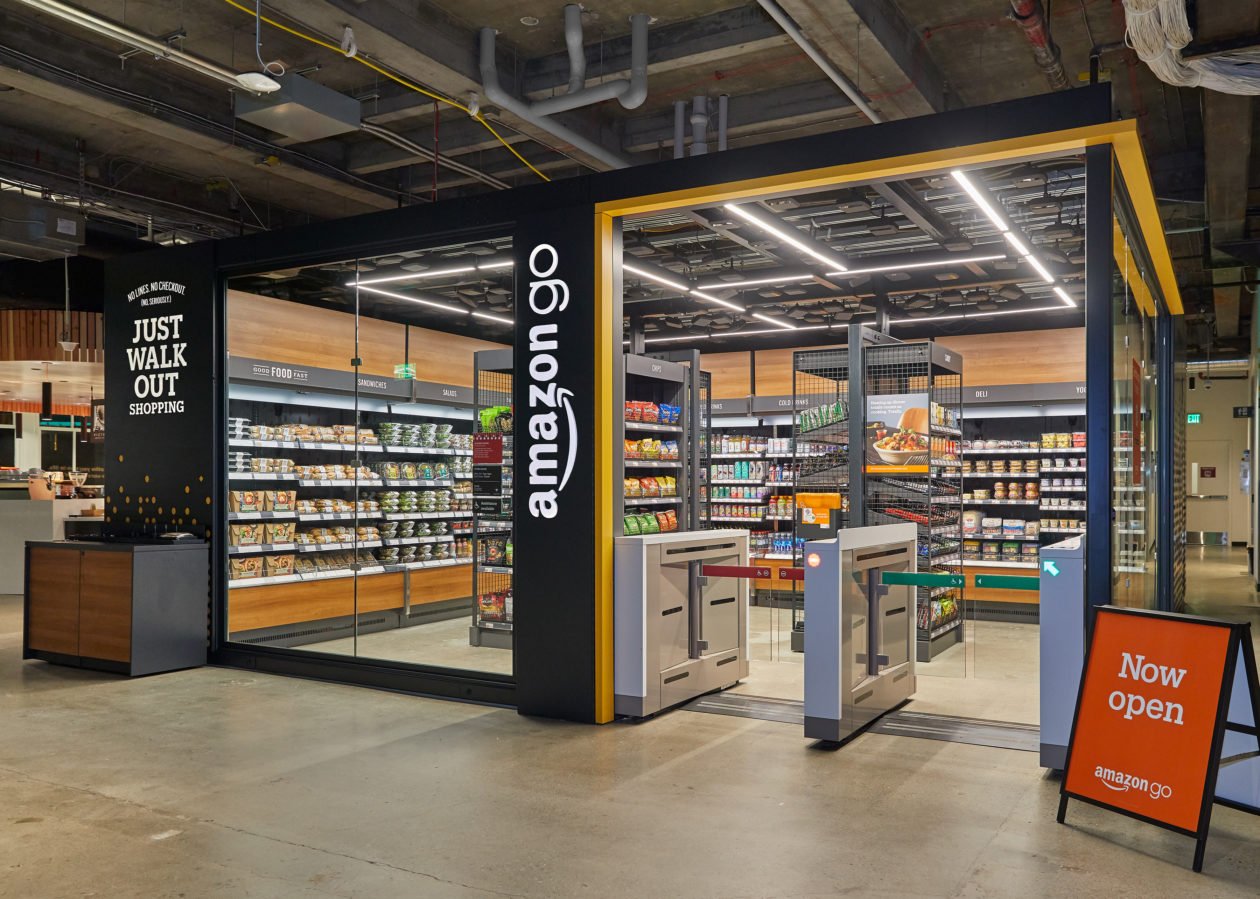7 Ways Amazon is Expanding Offline
It may surprise you to learn that Amazon has over 600 retail locations. Over 500 of these locations are Whole Foods stores and the remaining stores include convenience stores, grocery stores and even a clothing store. Amazon used to also have Amazon 4-star stores which sold products that have at least a 4-star rating on amazon.com including Echo devices, games, books, kitchen and home products. But those stores as well as its book stores and popup stores have since closed down.
But Amazon still believes its future growth is dependent not only on eCommerce but on physical retail as well. It has also developed an impressive system of pick up locations to meet customers where they are. Take a look at this list to see the types of locations Amazon has.
1. Amazon Go. A sneak peek into the future was given when Amazon unveiled its first Amazon Go store to the public in 2018. Amazon Go is a convenience store that was first launched with no cashiers but instead uses machine learning and sensors to determine which items customers have taken off shelves. After customers have finished shopping they can walk out of an Amazon Go store without having to ever stand in a line or go through a checkout. When customers leave the store their Amazon account is automatically charged. Amazon now has 43 Amazon Go stores.
Do you like this content? If you do subscribe to our retail trends newsletter to get the latest retail insights & trends delivered to your inbox
2. Amazon Fresh Supermarket. Amazon opened its first Amazon Fresh supermarket in Los Angeles in 2020. Amazon Fresh supermarkets are 35,000 sq. ft on average and instead of focusing on organics like Whole Foods it sells a range of brands. There are 44 of these stores.
3. Whole Foods. Even with inexpensive grocery delivery people still like to see, touch and select their fresh food items. That was one of many reasons for Amazon’s acquisition of Whole Foods in August of 2017. Amazon’s original goal was to be a top five grocery retailer by 2025 and it can’t do that through online sales alone. Amazon has 533 Whole Foods stores.
4. A Hair Salon. Amazon opened its first hair salon in London, England in 2021. The salon has augmented reality mirrors where you can see what a hair colour looks like digitally before it's applied. The salon also has “point and learn” tech which allows customers to point at a product to receive more information on a nearby screen. Customers can also buy products by scanning a QR code which takes them to Amazon’s website.
5. Clothing Stores. Amazon opened its first physical clothing store in May of last year in Los Angeles. The 30,000 sq. ft men's and women's store called Amazon Style sells hundreds of clothing and accessories brands including Amazon’s own private label brands. "Customers enjoy doing a mix of online and in-store shopping. And that's no different in fashion," said Simoina Vasen, managing director of Amazon Style. "There's so many great brands and designers, but discovering them isn't always easy." Amazon is estimated to be the number one apparel retailer in the United States.
6. Amazon Pick-up Locations. Amazon has thousands of pick-up locations across the United States where customers can pick-up Amazon purchases. This service is similar to the service provided by the post office but instead it is dedicated to Amazon and customers can return packages free of charge. Prime members can receive same day or one day pick-up at these locations.
7. Amazon Lockers are located in grocery and convenience stores, apartment buildings and malls and allow customers to pick up and return packages. Customers receive a unique code after they have made a purchase from Amazon they can use to open their locker. The placement of these lockers in Whole Foods is likely to drive cross shopping as customers shop at Whole Foods while they are on their way to pick up their packages. There are Amazon Lockers in more than 900 cities in the US.
You may also like:
How Amazon Makes Money In Ways Other Retailers Do Not
Amazon’s Ecosystem, How it Attracts and Retains Customers
6 Reasons Walmart’s eCommerce Strategy is Winning
Why DoorDash & Other Delivery Apps Struggle with Profitability
The Top 20 Best Ideas for Increasing Foot Traffic to Your Store
Sources
https://www.businessinsider.com/r-short-visits-rise-at-whole-foods-stores-with-amazon-lockers-2018-3
https://www.amazon.com/primeinsider/tips/amazon-locker-qa.html?tag=bisafetynet2-20
https://www.cnet.com/news/amazon-hub-lockers-now-available-to-500000-us-residents/
https://www.amazon.com/b?ie=UTF8&node=17337376011
https://www.businessinsider.com/amazon-pickup-locations-how-to-use-them-2018-7
https://www.businessinsider.com/whole-foods-ceo-amazon-reputation-lower-prices-2017-9
https://ca.finance.yahoo.com/news/amazons-bookstores-arent-just-selling-012858121.html
https://www.businessinsider.com/amazon-go-proves-cashless-dream-dead-2019-5
https://www.businessinsider.com/amazon-launches-presented-by-amazon-store-in-malls-2019-5

